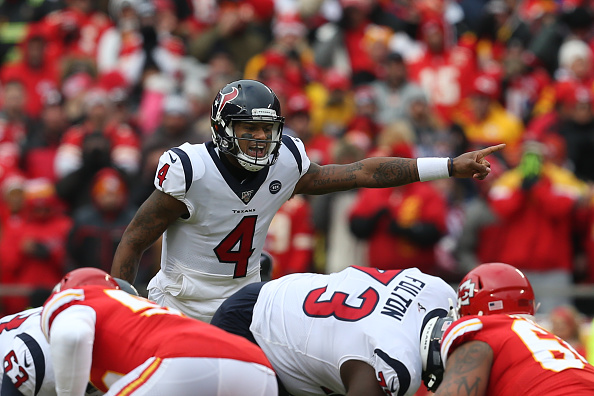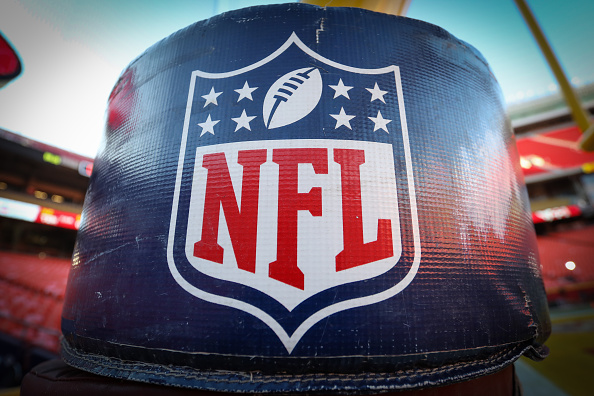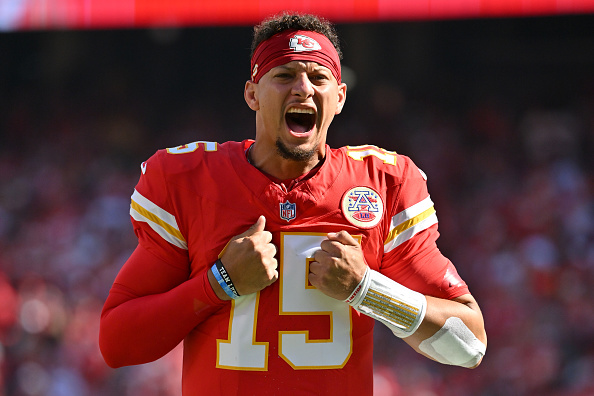Football fans’ eyes can only do so much. Beyond the simple analysis of players on the field, the ruthless data on spreadsheets never lie.
Here’s a look at 2019’s best quarterbacks from a statistical standpoint.
For an outline of how the ranking works, please visit Part I. You can view the spreadsheet here. Part II is here. Part III is here. Click here for Part IV.
The numbers within the parentheses are the adjusted ranks with 332 pass attempts and 400 pass attempts.
Key:
Y/A+ = yards per attempt index
NY/A+ = net yards per attempt index
AY/A+ = adjusted yards per attempt index
ANY/A+ = adjusted net yards per attempt index
Comp%+ = completion percentage index
TD%+ = touchdown percentage index
INT%+ = interception percentage index
Sack%+ = sack percentage index
Rate+ = passer rating index
20 – Gardner Minshew, Jacksonville Jaguars, 99.8 Grade (20, 20)
Coming out of Washington State, Minshew projected as a backup, but he was forced into action Week 1 when Nick Foles went down with an injury. Minshew performed admirably, completing 88 percent of his passes for 275 yards, two touchdowns, and an interception. His 122.5 passer rating against the Chiefs was his highest of the season. Minshew did not throw another interception until Week 6, and he only threw six in 14 games, leading him to a 117 INT%+. He guided the Jaguars to a 6-6 record in his starts, throwing 21 touchdowns and posting a 91.2 passer rating. He was the closest definition to average.
19 – Drew Lock, Denver Broncos, 100.3 Grade (32, 29)
Lock’s grade is boosted by a 127 Sack%+ that ranked second among all 53 quarterbacks. Without it, Lock would have a 97 Grade. He had a relatively small sample size of just 156 attempts, that dragged him down in the 332-attempt and 400-attempt grades. Lock started five games, winning four of them including the excellent performance in Houston. Lock went 22-for-27 with 309 yards, three touchdowns, and a 136.0 passer rating in a flash of potential. His other four starts were a mixed bag. Denver was outscored in his other four starts, and the wins are likely based on Denver’s defense playing well down the stretch. Moving into 2020, Lock controls the potential of Denver, but Denver should have a high floor if Lock is an average quarterback.
18 – Carson Wentz, Philadelphia Eagles, 100.4 Grade (16, 16)
Wentz led the Eagles to the playoffs despite having a revolving door of wide receivers. In his first full season since 2016, Wentz completed 64 percent of his passes, tossing 27 touchdowns to seven interceptions. He was more conservative than the average quarterback, finishing below average in all of the yards per attempt metrics. However, Wentz shined with a 119 Int%+, keeping him above average overall. Philadelphia added Jalen Reagor in the first round of the draft, and Wentz should develop a solid rapport with him and push the ball down the field more in 2020. Wentz has a shot to finish above average in every adjusted stat in 2020.
17 – Jared Goff, Los Angeles Rams, 101 Grade (13, 14)
The only man to go ahead of Wentz in the 2016 draft, Goff had a reasonably productive 2019 season. He threw for 4,638 yards, 22 touchdowns with 16 interceptions. In a vacuum, his stats were fine. However, they represent a sizable dip from his 2018 stats. After back-to-back seasons with a passer rating above 100, Goff slid to an 86.5 in 2019. Goff’s only elite adjusted stat was a 124 Sack%+. He has the talent surrounding him to get back to his 2018 and 2019 seasons, but Goff will have to improve. Goff struggled for much of the first three months, but he would have been on pace for 5,258 yards, 35 touchdowns, and 13 interceptions if his December stats were extrapolated.
16 – Philip Rivers, Los Angeles Chargers, 101.2 Grade (15, 15)
The new signal-caller for the Colts, Rivers regressed in 2019. He posted a career-low 3.9 touchdown percentage and a comically high 3.4 interception percentage. His passer rating slumped to 88.5, his lowest since 2016. He enjoyed favorable ratings in the yards per attempts adjusted metrics, but his 83 Int%+ was poor. Moving into Indianapolis, Rivers will have the benefit of a strong offensive line and an effective ground game. In theory, Rivers should throw fewer interceptions and more touchdowns. If all goes to plan, Rivers should post numbers similar to his 2006 season with MVP LaDainian Tomlinson. If not, the Colts will be a middle-of-the-road offense just as they were in 2019 (16th in scoring).
15 – Aaron Rodgers, Green Bay Packers, 103.6 Grade (12, 12)
Rodgers capped off his 12th consecutive season with an above-average passer rating in 2019. He is far from the 2011 version of himself that might be the best quarterback of all-time, but Rodgers was solid last season. Rodgers threw four interceptions on 569 passes for a microscopic 0.7 interception percentage. He led the NFL in Int%+ for the fourth time. Rodgers only has a handful of magical throws left per season, but he fills in the gaps with good quarterbacking. Rodgers will turn 37 in December. He likely has about five years left of playing at a high level, but Green Bay has failed to surround him with talented pass catchers outside of Davante Adams. However, the Packers have positioned themselves to create a strong backfield with Aaron Jones and rookie AJ Dillon. They might be trying to extend Rodgers’s prime by conserving his arm.
14 – Deshaun Watson, Houston Texans, 104.9 Grade (14, 13)
Watson’s second full year as a starter was much of the same from his 2018 season. There were slight fluctuations in stats, but Watson mirrored most of the numbers. If this stat outlook included rushing numbers, Watson would likely land in the top 10, but Watson’s pure passing stats suffer from a below-average Int%+ and a poor Sack%+ of 89. He will be without the services of DeAndre Hopkins in 2020, but Watson could be even more successful without the former All-Pro pass catcher. Similar to Matthew Stafford’s renaissance after Calvin Johnson retired. Watson may not see an immediate statistical improvement, but his decision-making should advance beyond “let’s see if DeAndre is open.”
13 – Matt Moore, Kansas City Chiefs, 105.9 Grade (25, 24)
Moore filled in when Patrick Mahomes missed two starts. He posted passer ratings of 107.1 and 103.9 in those starts, leading Kansas City to a 1-1 record. He was not Mahomes, but he posted strong adjusted numbers including a 137 Int%+ and 113s in AY/A+ and Rate+. His 332-attempt and 400-attempt rankings slip, but Moore’s 91 attempts were some of the most efficient quarterback play of the season. Moore did have the benefit of playing with a supporting cast that eventually won a Super Bowl, but Moore played exceptionally well. Moore will continue to backup Mahomes in Kansas City in 2020.
12 – Teddy Bridgewater, New Orleans Saints, 106.3 Grade (21, 21)
When Drew Brees missed five games, Bridgewater stepped in and posted a passer rating of 103.7 The Saints went 5-0. It was the first time since 2015 that Bridgewater had multiple starts. In terms of his adjusted stats, Bridgwater posted at least a 96 in each category, maxing out with an Int%+ of 121. He posted career-highs in every stat besides Y/A+. During the off-season, Bridgewater signed with the Carolina Panthers. Carolina is in a state of rebuilding, but the offense has a clear upside in 2020. D.J. Moore is an excellent receiver, and Christian McCaffrey could be a top 10 receiver if he switched positions. Bridgewater should post solid stats in 2020 even if they do not lead to many wins.
11 – Jimmy Garoppolo, San Francisco 49ers, 111.3 Grade (10, 11)
Garoppolo finally started a full slate of games five years after being drafted. He tossed 27 touchdowns and 13 interceptions on nearly 4,000 passing yards. He posted a passer rating of 102.0. In terms of adjusted metrics, Garoppolo posted a 111 or higher in seven of the nine metrics, compensating for below-average Int%+ and Sack%+ indexes. Trent Williams coming to the Bay Area should help the Sack%+ mark, and Garoppolo could finish as a top 10 quarterback in the 2020 edition of these rankings. Garoppolo does have several benefits including yards after catch monsters in George Kittle and Deebo Samuel, but Garoppolo still has to make timely throws in rhythm to launch his pass catchers. Kyle Shanahan makes life easier for Garoppolo with game scripts that often are run-centric, but Garoppolo can still pull the trigger on most throws when he needs to.
Check us out on our socials:
Twitter: @PTSTNews and @TalkPrimeTime
Facebook Page: Prime Time Sports Talk
Join our Facebook Group: Prime Time Sports Talk
Instagram: @ptsportstalk
Follow Ryan Potts on Twitter @MrSplashMan19
Main Image Credit: Embed from Getty Images







One Response